Kawasaki KLE 500
On first impressions I have my suspicions about the registration of this Kawasaki KLE500 – 2008, surely not? Not only is it quite a basic and dated looking machine, it’s still normally aspirated with a set of Kline carbs. The bike looks like something that shared the stage with Honda’s Africa Twin. I’m reliably informed that while they certainly were manufactured through most of the 90s, they were reintroduced in the mid 2000s.
In order to pass emissions tests, the exhaust is fitted with a three stage catalytic converter. Other than that it hasn’t changed at all.
Kawasaki has a long history of making dirt bikes as well as off-road and trail orientated machines. The KLE is a good example of this type of bike. The parallel twin produces a modest amount of power, thanks largely to the restrictive exhaust, but the rest of the bike is practical. A low screen works well in city traffic.
The upright seating position helps with visibility. The cushion on the rider’s seat is deep and dangerously close to comfortable. I’ve never ridden a bike of this sort that didn’t make me feel like I was sitting on a plank.
While the bike has an upright seating position, leg length isn’t an issue, the seat height is very accessible to the more vertically challenged riders amongst us. The layout of the clocks is simplicity itself and very much old school, a big blue light for the high beam, a big green light for neutral, a big orange light for the indicators and two easy to read clocks. Interestingly enough, there is no kill switch on the side stand, but the bike does have hand guards.
Did I mention the carburettors? The bike is normally aspirated and is fitted with a good old fashioned choke lever which is mounted on the handlebars beside the clutch lever. If this sounds old school you’ll be well impressed with what else I found.
Immediately after picking the bike up and riding it for several kilometres across the city centre, without any warning it chugged to a halt having run out of petrol. Imagine my delight when faced with the prospect of pushing the Kwacker to the next petrol station I instead found another relic from the 90s – the fuel tap. I twisted it from on, past prime and onto reserve – twisted the throttle three times, hit the starter and rode on.
Out in the country the bike rides well, the suspension is soft and reminded me in a lot of ways of my Yamaha DT125R, the bike I learned to ride on. Not because the power was so low, but because the handling was so predictable and the machine felt familiar to me. I couldn’t help but think that as a first or second bike, the Kawasaki would be perfect.
While out enjoying a Sunday morning spin with two other riders on much more modern equipment, the BMW F800GS and Triumph’s stunning new Tiger 800, the Kwacker never gave any cause for concern and handled itself well on the twisty, badly surfaced back roads we travelled on.
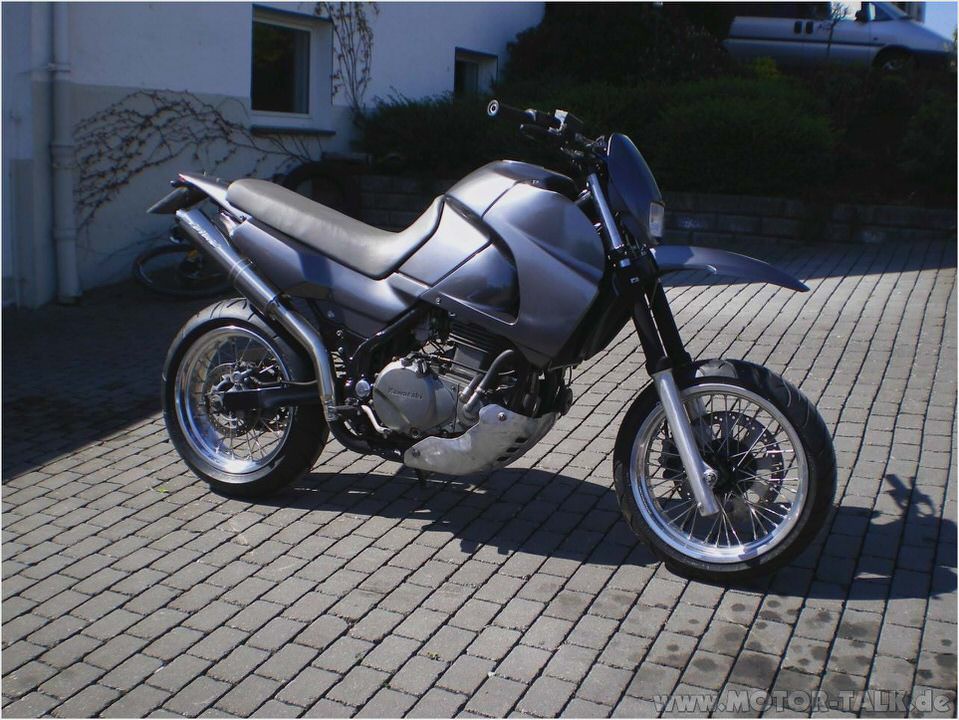
Appearances wise, the bike is relatively boring and this is perhaps not helped by the colour scheme of the bike on test, a dull bottle green. But its dullness was also its strength, rather like a two wheeled Toyota Hilux, the Kawasaki coped with everything that was thrown at it. Poorly paved roads, wet weather, forest trails and waist high wet grass were all dealt with with quiet efficiency.
The brakes are really simple, on this bike we were a long way from any of your combined or anti lock braking systems. Initially I found the brakes somewhat snatchy on the front end, but I soon acclimatised to them and certainly for me it was more of a case of adapting my rider style than their being anything inherently wrong with the stoppers on the bike. In situations where gentle back brake use was more appropriate, I was once again struck by the quiet efficiency of the machine.
The engine, which is the same as the reliable and economical Kawasaki ER5, only produces 45bhp and an even more paltry 41Nm of torque and while the dry weight is a relatively hefty 181 kilograms, somehow it all comes together well thanks in no small part to the gearing arrangement and the fact that the weight of the bike is slung low and is centred very well. While the bike does weigh as much as it does, all the weight is slung low and between the rider and the handlebars.
Positioning of footpegs and handlebars and the good distribution of weight make it easy to stand on the pegs, should the need or the terrain arise. The off road look is completed with a highly functional bash plate which may or may not have been tested once or twice on a rain soaked morning in Wicklow!
While I would never set off around the world on one of these, if I found myself far from home with nothing but a KLE500, I’m quite sure I could do worse. This machine is never going to set the world on fire, but then again, we don’t always need to. If you have yet to do your test or are still on a restricted licence, you could do a lot worse than buy one of these.
The bike on test was supplied by Ciaran at Megabikes on Dublin’s Wexford Street. You can contact him on 01 478 4201 or for more details on the web, see www.megabikes.ie. If you talk nicely to him, he might even arrange a test ride.
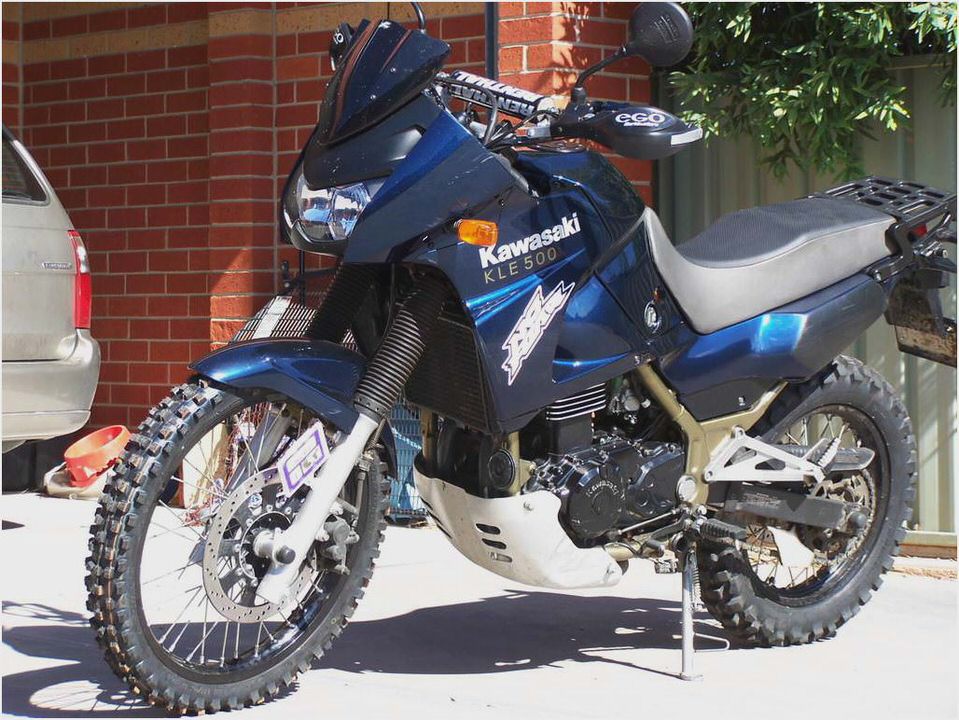
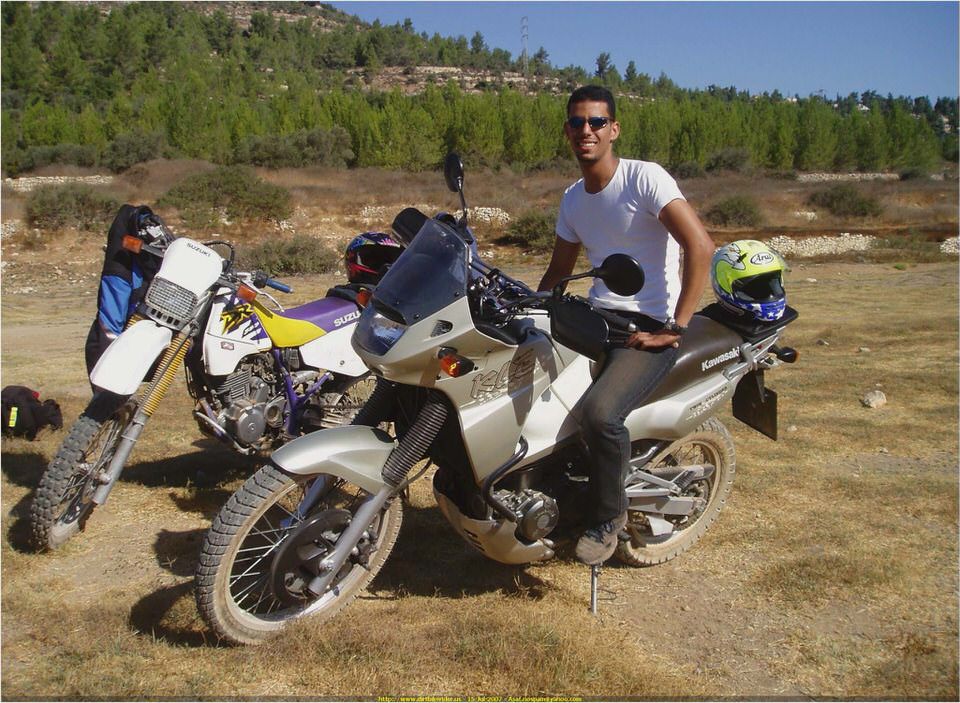
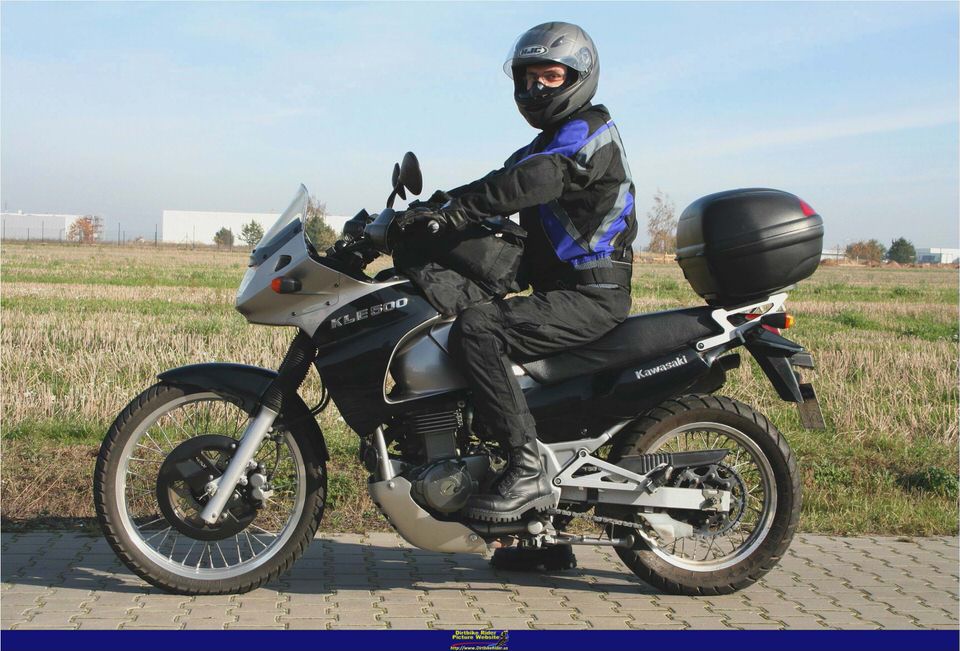
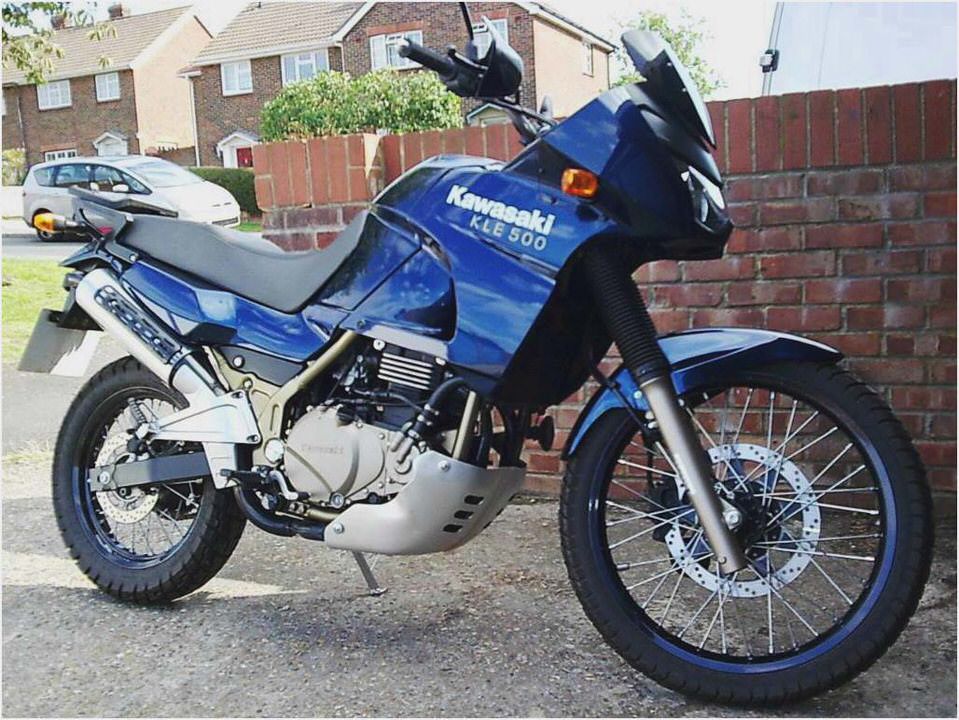
- Comparative motor bikes Suzuki GSR 750 vs Kawasaki Z 750, match 1: Water…
- Kawasaki D-125 Review Motorcycle HouseMotorcycle House
- Five classic strokers no.2: Kawasaki H1 Mach III-News & Reviews-Motorcycle…
- Kawasaki Kdx 200 Description eHow
- Kawasaki KLE 500 – Bikes Details Video – Motorcycles
